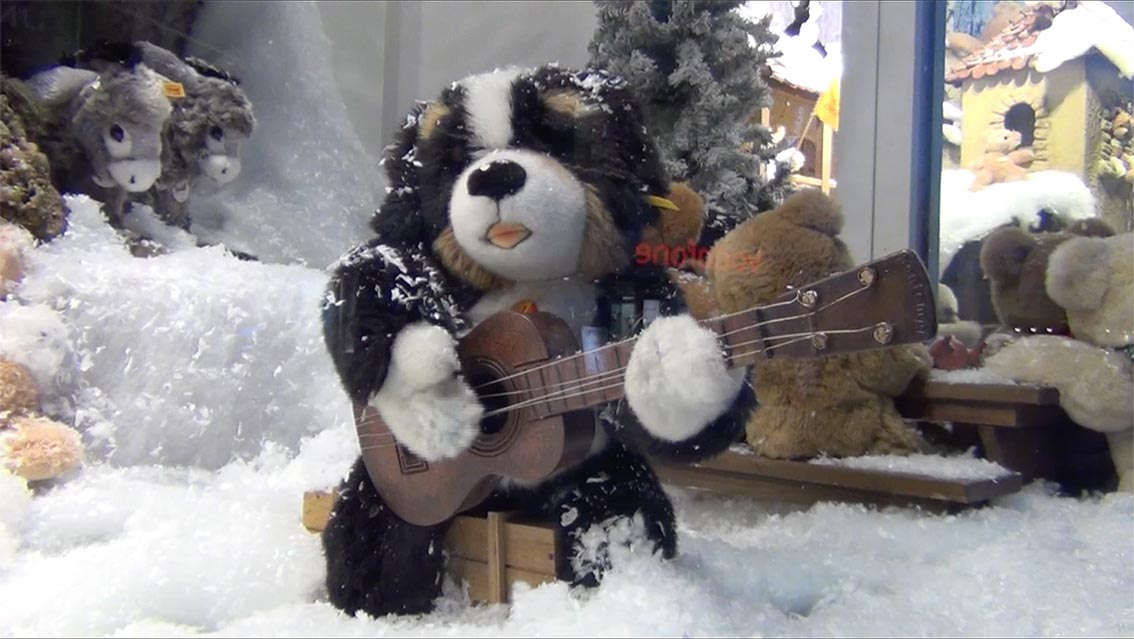 |
video: https://vimeo.com/179599498 ABOUT THE WORKERS CONDITION BEFORE MACHINERY (AFTER ENGELS) - Video Un pequeño mundo de máquinas. Los cuerpos de los trabajadores son reemplazados por animales de peluche en una vitrina navideña. Escenas inocentes y armónicas reproducidas sin fin mecánicamente provocan tensión al articularse con el enunciado dialéctico del texto de Engels. Detrás de una vidriera navideña, un muestrario variado de animales de peluche desarrolla actividades productivas y de esparcimiento de manera mecánica. Tiernos, simpáticos, amables, llevan una existencia idílica, absurdamente feliz. Sonríen, se acarician, remolcan un carro, mueven una escalera, esquían, serruchan un tronco, sirven helado, se abrazan. Estas escenas armónicas se suceden, una tras otra, provocando tensión al articularse progresivamente con el enunciado dialéctico de un texto de Engels. Así como la fuerza productiva de los antiguos hiladores y tejedores ingleses fue reemplazada por las primeras máquinas en la Revolución Industrial, hoy los cuerpos de los trabajadores son suplantados por estos juguetes automatizados. Cada trabajo requiere de su herramienta y cada herramienta simboliza, más allá de su función práctica, la adquisición por parte de una comunidad de la capacidad de condensar en un solo elemento el pensamiento y la acción. Con el creciente e incesante distanciamiento de las personas de todo tipo de actividad laboral manual también desaparecen formas específicas de recrear e interpretar el mundo. Los medios de producción y de destrucción están entretejidos. En medio de esta cerrada e histórica trama, la cabeza de una niña atraviesa el cuadro. Y su mirada interroga a los reflejos.
ABOUT THE WORKERS CONDITION BEFORE MACHINERY (AFTER ENGELS) - Video Behind a Christmas window, a varied collection of soft toys mechanically engage in productive and leisure activities. Tender, nice, kind, they live an idyllic, absurdly happy existence. They smile, touch each other, tow a car away, move a ladder, ski, saw a tree trunk, serve ice cream, embrace. These harmonic scenes are happening, one after the other, provoking tension as they progressively articulate the dialectical statement of an Engels text. Just as the productive force of old English spinners and weavers was replaced by the first machines in the Industrial Revolution, today the bodies of workers are supplanted by these automatized toys. Every work requires its tool and each tool symbolizes, beyond its practical function, the acquisition on the part of a community of the capacity of condensing thought and action into a single element. With the growing and incessant distancing of people from all type of manual labor, different, specific ways of recreating and interpreting the world are also disappearing. The medium of this closed and historic plot, the head of a girl pierces the painting. And her look demands reflection. |